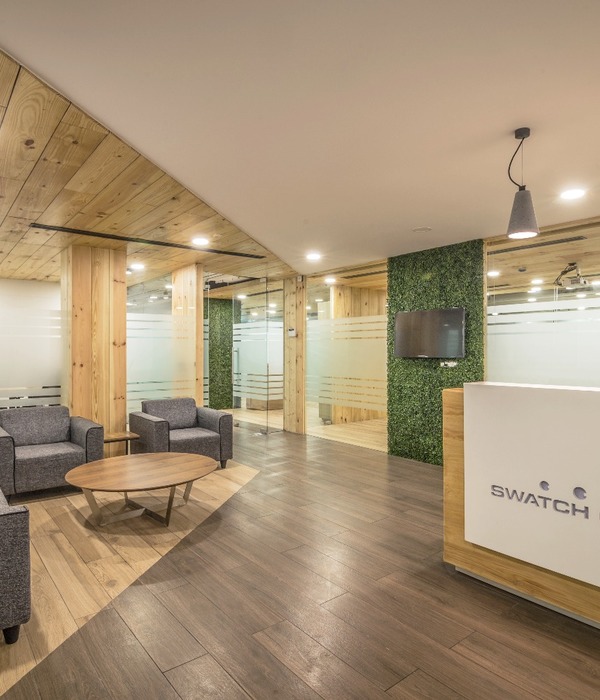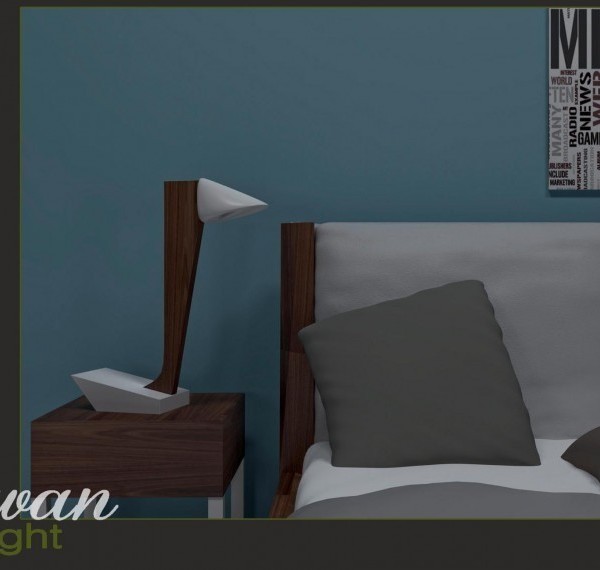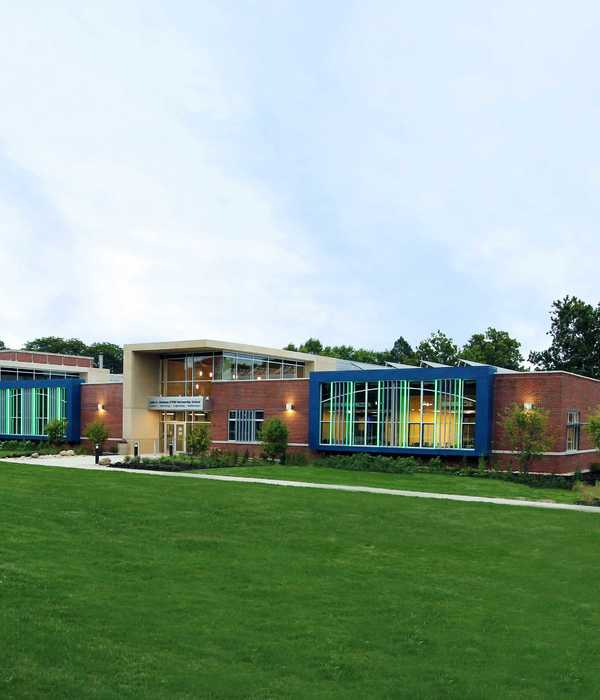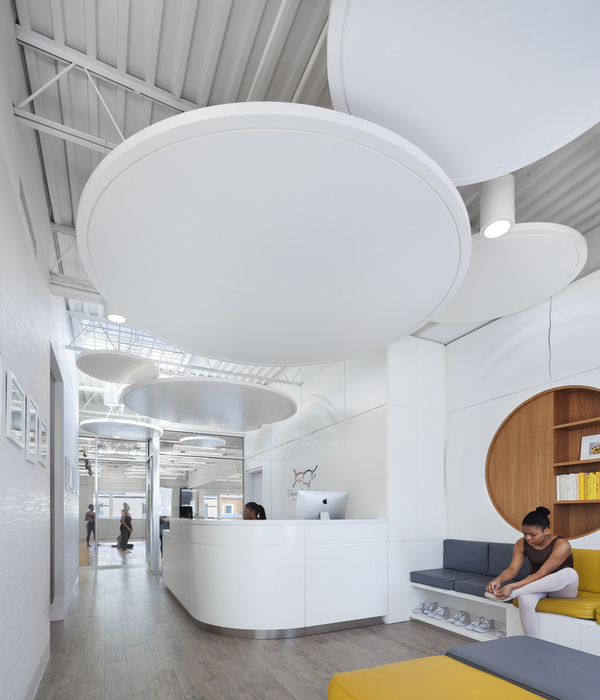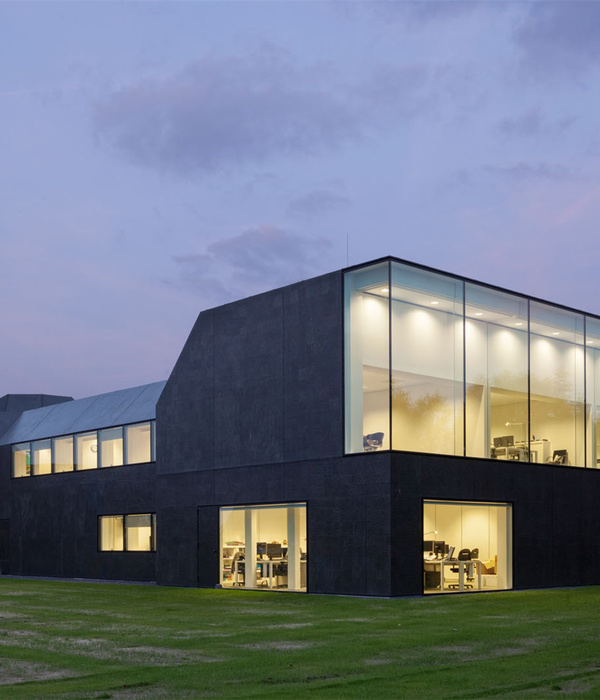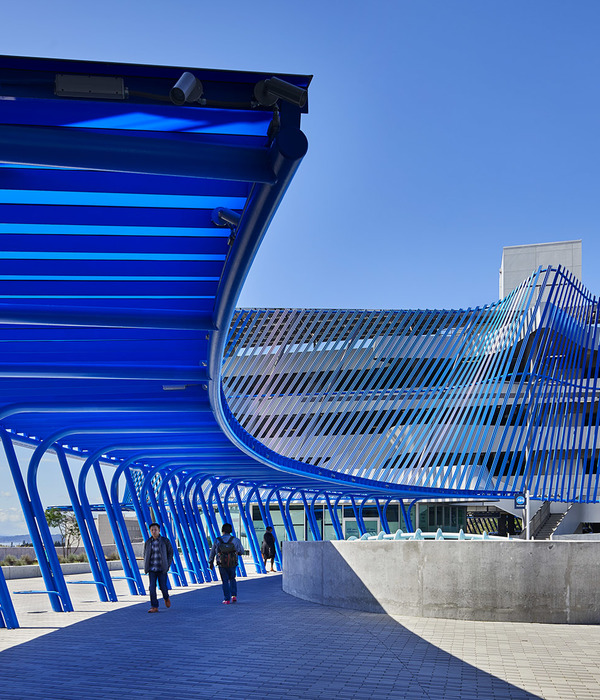- 项目名称:兴汉观演台
- 建筑设计:凡度设计事务所
- 景观设计:上海聚隆绿化发展有限公司
- 建筑施工图设计:上海林同炎·李国豪土建工程咨询有限公司
- 公司网站:http:,,www.dusstudio.com,
- 联系邮箱:349281112@qq.com
- 设计团队:吴茂辉,李宽,赵伟,刘理想,魏文琪
- 项目地址:陕西省汉中市兴汉胜境
- 建筑面积:9100平方米
- 摄影版权:iNNS 合什建筑摄影
观四方而高曰台——《尔雅》 Platform is used to take in everything in a glance on high—Erhya
高台垒筑是汉代宫室、祭典的主要建筑形式,以其雄伟威严被后世传统官式建筑所普遍沿用。古汉台和拜将台是汉中至今留存的汉代高台建筑遗迹。“留此一坯土,犹是汉家基。”2000多年前的历史风烟似乎远透时空、仍可探寻。
High platform is the principal architectural form of palaces and ceremonies in the Han Dynasty. It has been widely used in traditional official buildings in later generations for its supreme majesty. The Ancient Platform Built in the Han Dynasty and the General-Appointment Platform are the relics of high-rise buildings dating back to the Han Dynasty in Hanzhong. “Such a handful of clay remains the foundation of the Han Royal Family.” What happened more than 2,000 years ago seems to be still available for exploration.
▼项目鸟瞰图,Aerial view of the project © iNNS 合什建筑摄影
▼由入口广场远眺观演台,Viewing the platform from the entrance square © iNNS 合什建筑摄影
▼由阙门远眺观演台,Viewing the platform from the gate © iNNS 合什建筑摄影
在兴汉胜境,我们也希望营造这样一方可以与历史对话的汉台。
We intend to build such a Han platform that reminds people of the history of the Han Dynasty at Xinghan Scenic Spot.
▼区位与视线分析,location and view analyze diagram © 凡度设计事务所
▼视角与轴测分析,view and axonometric diagram © 凡度设计事务所
▼流线分析,circulation analyze diagram © 凡度设计事务所
站在“兴汉胜境”的入口广场,透过阙门,游客可看到远处的汉宫被恰到好处地“安置”在近处的汉台之上。跨越300米的汉源湖,远与近的视觉重叠,像中国山水画一样铺展出一幅充满穿越感的景区图卷。
Standing at the entrance square of “Xinghan Scenic Spot”, through the inner city gate, visitors can see that the Han Palace in the distance is properly “placed” on the nearby Han Platform. The Hanyuan Lake, which spans 300 meters, overlaps far and near sights, presenting a view of scenic spot full of the sense of time-travel like a Chinese landscape painting.
▼项目概览,overall of the project © iNNS 合什建筑摄影
▼南侧透视,south perspective © iNNS 合什建筑摄影
▼由水上舞台回看观演区,viewing the performance from the stage on the water © iNNS 合什建筑摄影
▼北侧正透视,north perspective © iNNS 合什建筑摄影
层层汉台石阶,引导游客穿阙门,过金水桥,此时的汉宫已被高台所遮蔽。高台之下是草色连阶天高远,高台之上会是宫墙巍巍四方城吗?
Layers of stone steps of the Han Platform guide visitors walking through the inner city gate and cross the Golden Water Bridge. And then, visitors will be shocked by the sight that the Han Palace is already covered by the high platform. Beneath the high platform are grassy steps as far as the eye can reach, and whether the square royal city with towering walls stand above the high platform?
▼观演区透视,audience area perspective © iNNS 合什建筑摄影
▼由观演区看汉宫全景,panoramic view on the audience area © iNNS 合什建筑摄影
游客会带着想象和期待拾级而上。但是最终映入眼帘的却是一池湖光远山横。曾经叠放在高台之上的汉宫还远在一池碧水之外,依山就势,巍峨磅礴。这种强烈的印象反差让汉台本身被淹没在游客的视觉焦点和思维认知之外,成为一种引导的手段和主体的配角。
Visitors will come up out of imagination and expectation. However, only a lake with mountains standing far away leaps to the eyes. The majestic Han Palace, which was once stacked on the high platform, is far away from a pool of clear water, standing on the hillside. Such a sharp impression contrast makes Han Platform far beyond the visual focus and cognition of tourists, becoming a guiding tool and supporter of the subject.
▼阶梯式的高台,stepped platform © iNNS 合什建筑摄影
老子说:“视之不见名曰夷……是谓无状之状,无象之象。”(《道德经》十四章)
Lao Tzu said: ” You can’t see it when you see it, call it “Yi”……This is a shape without a shape, an object without an object. ” (Chapter 14 of Tao Te Ching)
▼石材的组合彰显出历史的气息,combination of stones reveals the history © iNNS 合什建筑摄影
▼接驳车车行入口,vehicular entrance © iNNS 合什建筑摄影
▼后台演员入口,Backstage entrance © iNNS 合什建筑摄影
兴汉观演台最初是要为兴汉胜境大型室外演出“天汉传奇”设计一个主观演区。就整个兴汉胜境而言,汉宫是当之无愧的主角。因此观演台的设计从一开始就设定了从属、消隐、烘托的大思路。秉持着这样的初衷,我们以汉代建筑基座——台的形式,隐藏了建筑的实体功能,使游客“迎之不见其首”,只见汉宫不见汉台;“随之不见其后”,又见汉宫不察汉台。以此构筑兴汉观演台的无象之象,无形之象。
Xinghan Theatrical Platform was originally designed to be a major watching area for the large-scale outdoor performance “Tianhan Legend” in the Xinghan Scenic Spot. The Han Palace is a well-deserved protagonist for the Xinghan Scenic Spot, so the design of the theatrical platform followed the general idea of subordination, blanking and contrast from the beginning. According to the original intention, we concealed the physical function of the building in the form of “Platform”, a form of the base in the Han Dynasty, so that visitors “cannot see the front part from the front”, namely, only seeing the Han Palace but not the Han platform; “cannot see the rear part from the rear”, namely, seeing the Han Palace again but not the Han platform. In this way, the invisible image of the Xinghan Theatrical Platform is created.
▼入口夜景,night view of the entrance © iNNS 合什建筑摄影
▼演出场景,scenario of the performance © iNNS 合什建筑摄影
▼总平面图,site plan © 凡度设计事务所
▼一层平面图,1F plan © 凡度设计事务所
▼二层平面图&屋顶平面图,2F&roof plan © 凡度设计事务所
▼立面图,elevations © 凡度设计事务所
▼剖面图,sections © 凡度设计事务所
▼屋顶断面图,sections the roof © 凡度设计事务所
{{item.text_origin}}

